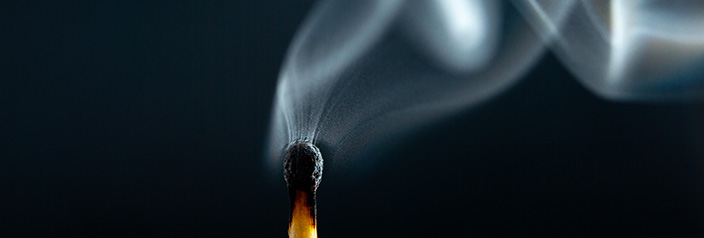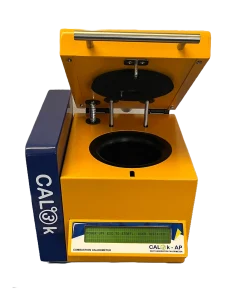Introduction
Low Calorific materials can be measured in our Calorimeters. They typically are flame retardant material that can be found the airline, vehicle and building industries. Low calorific results can also be from materials that have a high water content, like fresh wood chips. Other low Calorific Value tests measure the useable energy contained in a substance like low grade coal and industrial byproducts. In todays environmental climate change, companies are looking at their normally disposable byproducts to utilize them for their burning energy in a safe and environmentally friendly way.
The low CV materials have one thing in common: They burn reluctantly or not at all.


The CAL3K measures the temperature RISE when the sample is burned and relating the rise to a calibration to derive the energy from it. The temperature resolution is 0.000’001 C but the uncertainty is 0.000’010. This is the noise floor. To achieve a reasonable accuracy the sample rise must be 1000 times higher (0.01C). This is the error or uncertainty of the instrument. The error relates to approx. 0.01Kj/g (or 0.002Kcal/g, or 2.5Cal/g).
The instrument can measure a CV rise value as low as 0.1Mj/g with 10% uncertainty or 1Kj/g with 1%. That is not a problem with low CV values. The problem comes with igniting (and burning) the low CV sample. Once the sample burns a sufficient temperature rise must be achieved.

We discount hardware, weighing and preparation errors. In all instances the result is lower than expected. This is so because the CAL3K can lose energy but cannot gain it. Three possible scenarios can cause a lower result.
|
|
Lowering the Temperature Rise Limit The minimum default temperature rise warning limit is 8°C. It can be adjusted down but then requires a recalibration, which is very time-consuming. Not recommended. |
|
|
Increasing the Low CV Sample Mass to Get More Temperature Rise The default max mass limit is 1.5g and can be increased easily. However, the sample may not burn and could smoulder instead. The sample must fit into the crucible. This is a possible solution but is not recommended. |
|
|
Igniting the Low CV Sample with a Higher CV Substance This method is called spiking. For details, see the section on spiking in the operations manual. A sample is burned together with a known substance (e.g., Benzoic Acid), and after burning the mixture, the known substance's CV is subtracted from the result, yielding the low CV. This solves two problems:
|
Summary
The spiking method should be used whenever the sample substance is low and reluctant to burn. It introduces some operational complexity (see: SPIKING) and a neglectable determination error. The 0.5g Benzoic Acid tablets are ideal for spiking. Then adjust the unknown sample mass so that a 2-4C temperature rise results.
The following table shows the approx. sample mass for a 3C rise and anticipated low CV value:
| Low | 3 °C Rise |
| CV (Kj/g) | Mass(g) |
| 2 | 1.5 |
| 3 | 1.1 |
| 4 | 0.8 |
| 5 | 0.7 |
| 6 | 0.55 |
| 7 | 0.5 |
| 8 | 0.4 |
| 10 | 0.3 |
| 12 | 0.3 |
| 16 | 0.2 |
| 20 | 0.15 |
The 3C rise was chosen because the calibration is valid up to 16C rise and the 0.5g Benzoic Acid spike raises the temperature to approx. 12C which leaves 4C head space. The instrument will issue a warning when the 16C rise is exceeded. The warning can be ignored or the limit can be raised or the sample mass can be reduced.



